National Cathedral reckons with its racial history
A racial reckoning at a national landmark inspires beautiful new windows
This weekend, I attended the dedication and blessing of the “Now and Forever Windows” in the National Cathedral in Washington, DC. After removing two stained-glass windows commemorating Confederate Generals Robert E. Lee and Thomas “Stonewall” Jackson that had been installed in 1953 and donated by the United Daughters of the Confederacy, the Cathedral celebrated the installation of new windows designed by renowned artist Kerry James Marshall and an original poem “American Song” by acclaimed poet Elizabeth Alexander.
The new windows in the Cathedral’s main worship space weren’t just a replacement. They were the Episcopal church’s reckoning with the racial ills of our country and their complicity in it.
Whew. Let me tell y’all. The program was historic. It was emotional. And it was something to see.
After the processional of Episcopalian bishops and representatives from historically African American parishes, the Union of Black Episcopalians, justice organizations, and notable guests (I love these beautiful rituals!), the choir sang a Negro spiritual (“My Lord, What a Morning”) and a hymn (“All People That on Earth Do Dwell”).
First off, if y’all don’t know the artist Kerry James Marshall, look him up. I’ll say more about him later, but for now, I’ll just mention that his stepdaughter is first-term Congresswoman Sydney Kamlager-Dove from California’s 37th District; she began the program by reading an excerpt from Ecclesiastes. She was followed by a second reading from Harvard Professor Henry Louis Gates, Jr. The next reading was an excerpt from King’s Letter from a Birmingham Jail. But the person reading wasn’t listed in the program.
Imagine my delight when Supreme Court Justice Ketanji Brown Jackson walked to the stage to read King’s words. Her reading served as an introduction to remarks from the artist.
In his remarks, Kerry James Marshall was humble and soft-spoken, mentioning that he was born in 1955 in Birmingham, Alabama, 90 years after the Civil War ended, or rather, he questioned: did it end? He thanked his collaborator, Elizabeth Alexander, whose poem “American Song” will be hand-carved into the stone tablets beneath the windows in 2024.
Like I said before, make sure you do some Google searching of Marshall’s work if you aren’t familiar with him. But if you can see his work in person, I highly recommend. In 2017, my friend took me to his 35-year retrospective exhibit at the Museum of Contemporary Art in Los Angeles. To say I was blown away is an understatement. From lush landscapes populated by elegant Black figures to portraits of Black artists at work to an intense interrogation of America’s attitudes toward race, Marshall is one of the most intellectual and masterful artists at work today.
I just stood in that museum looking around, saying to myself, how have I never even heard of Kerry James Marshall? And apparently, I wasn’t the only one. Despite having won a MacArthur Genius Grant in 1997, he continued to quietly work in his studio for decades, without desire for excessive fame or publicity.
That 35-year retrospective exhibit changed all that. He is now widely recognized as a giant of his generation.
So when I learned he was doing the windows for the Cathedral and Elizabeth Alexander the poem, I marked my calendar.
Now y’all know I had to do some research and learn about this years-long effort to remove the windows and how they came to choose Marshall to design the new ones. Also, I wanted to know: what happened to the windows they removed? Did they crush them into tiny glass bits?
If you live in DC or if you’ve visited, you know that a crowning anchor of the city is the Washington National Cathedral. State funerals for four presidents, including Presidents Dwight Eisenhower (1969), Ronald Reagan (2004), Gerald Ford (2007), and George H.W. Bush (2009) were held there. Vice President Al Gore’s daughter Karenna was married in the cathedral in a lavish wedding in 2005. Four days before his assassination in 1968, Dr. Martin Luther King, Jr. preached his last Sunday sermon in the Canterbury pulpit.
I drive past the Cathedral every day, and I never fail to be awed by its magnificent architecture. Cathedral construction began in 1807 and wasn’t fully completed until 1990; it’s the sixth largest cathedral in the world. A real estate agent once told me that homes with views of the Cathedral are coveted in DC. I can understand why. It really is absolutely gorgeous.
Here’s the history of the windows:
After the tragic massacre of nine African Americans in Charleston, SC in 2015, followed two years later by the deadly white supremacist rally in Charlottesville, VA, the church finally heeded the call to take a stance on the windows containing Confederate symbols that had been in the main worship hall of the church for over sixty years.
Then two years of both public and private discussions and engagement began (I’m sure those conversations were intense!), during which time the committee overseeing the project chose Kerry James Marshall to be the artist. The committee said it was important that the artist be African American, but they also wanted someone who “could address racial justice appropriate for a cathedral but also with honesty and integrity.” They pledged to give the artist complete autonomy.
This is what he created:
These windows take a moment to process. In fact, I want to go back and take another look.
The committee chose Elizabeth Alexander to write the accompanying poem. Alexander, a 2005 Pulitzer Prize finalist, is a major poet of her generation who is known for her careful consideration of history in her work. Some of you remember her from when she delivered the first inaugural poem for President Obama.
She was a perfect choice for this project.
I learned that she and Marshall have been friends for years. Alexander grew up in DC. Her mother Adele Logan Alexander was a professor of African American history at GW. I can’t wait to see her words inscribed in stone.
Here is a short video of her reading the new poem, with Marshall at her side.
Here are a few more pics of the windows and the front of the program cover.

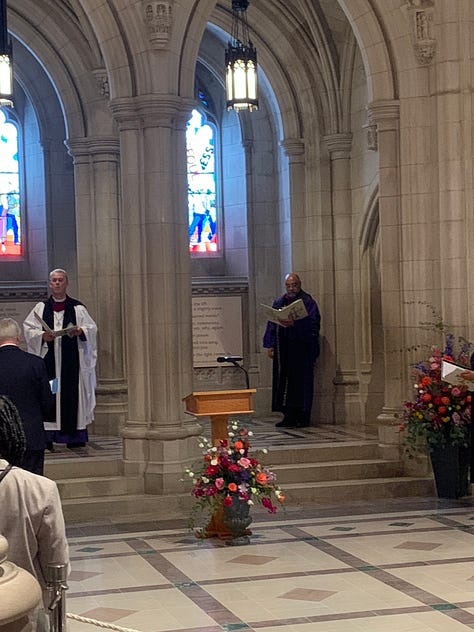
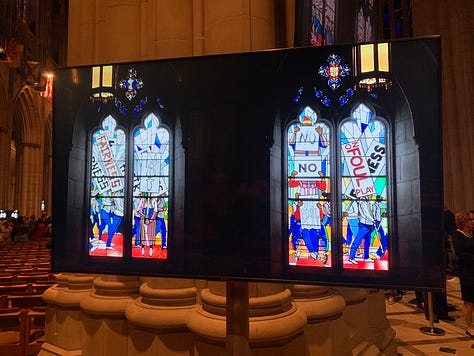
You can also view more pictures here.
So what happened to the old windows? I don’t know where they are now, but they were not destroyed. For a year, they were on loan to the Smithsonian Museum of African American History and Culture as part of a special exhibit. You really have to take a closer look at the Confederate windows to see how they deified those generals, cast them as saints on a mission from God rather than as traitors to their nation. It was definitely time to remove them.
When you get a moment, take a look at all the work the Episcopal church has been doing in recent years in terms of racial, LGBTQ, and other forms of social justice. There is still work to be done for sure, but the work has begun and that is really important.
If you’d like to learn more about the new windows in the National Cathedral, there is a short documentary by filmmakers Matt Echave and Bryan Washington about the installation of the windows which you can view here.
I also want to shout out the window fabricator Andrew Goldkuhle who brought Marshall’s vision to life. What a remarkable collaboration among these three esteemed artists.


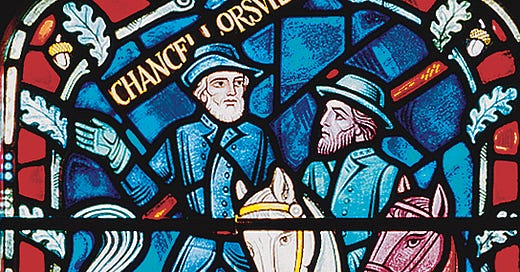



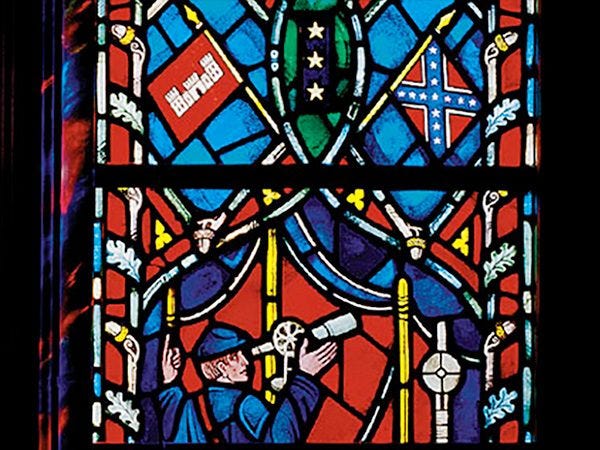
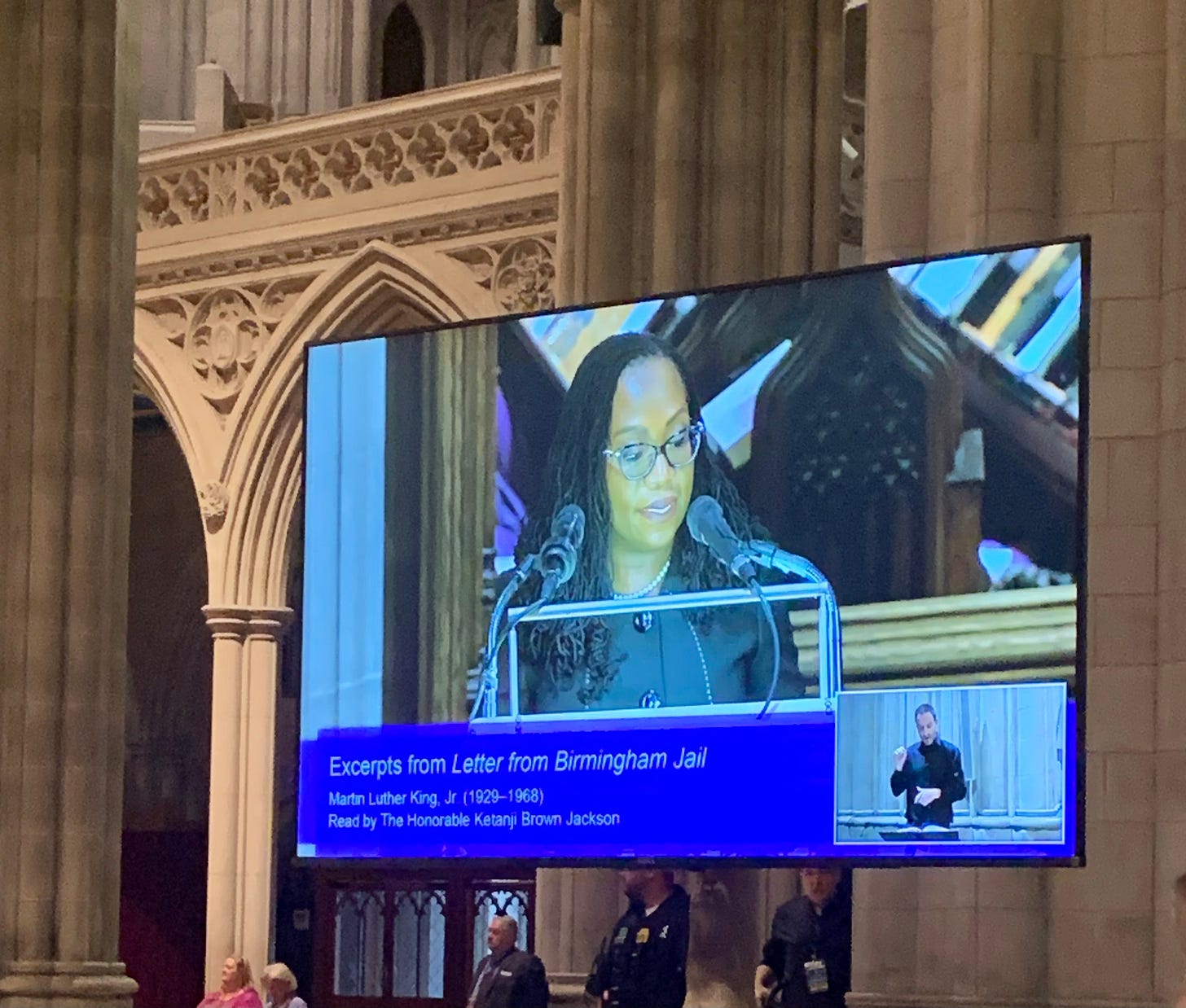
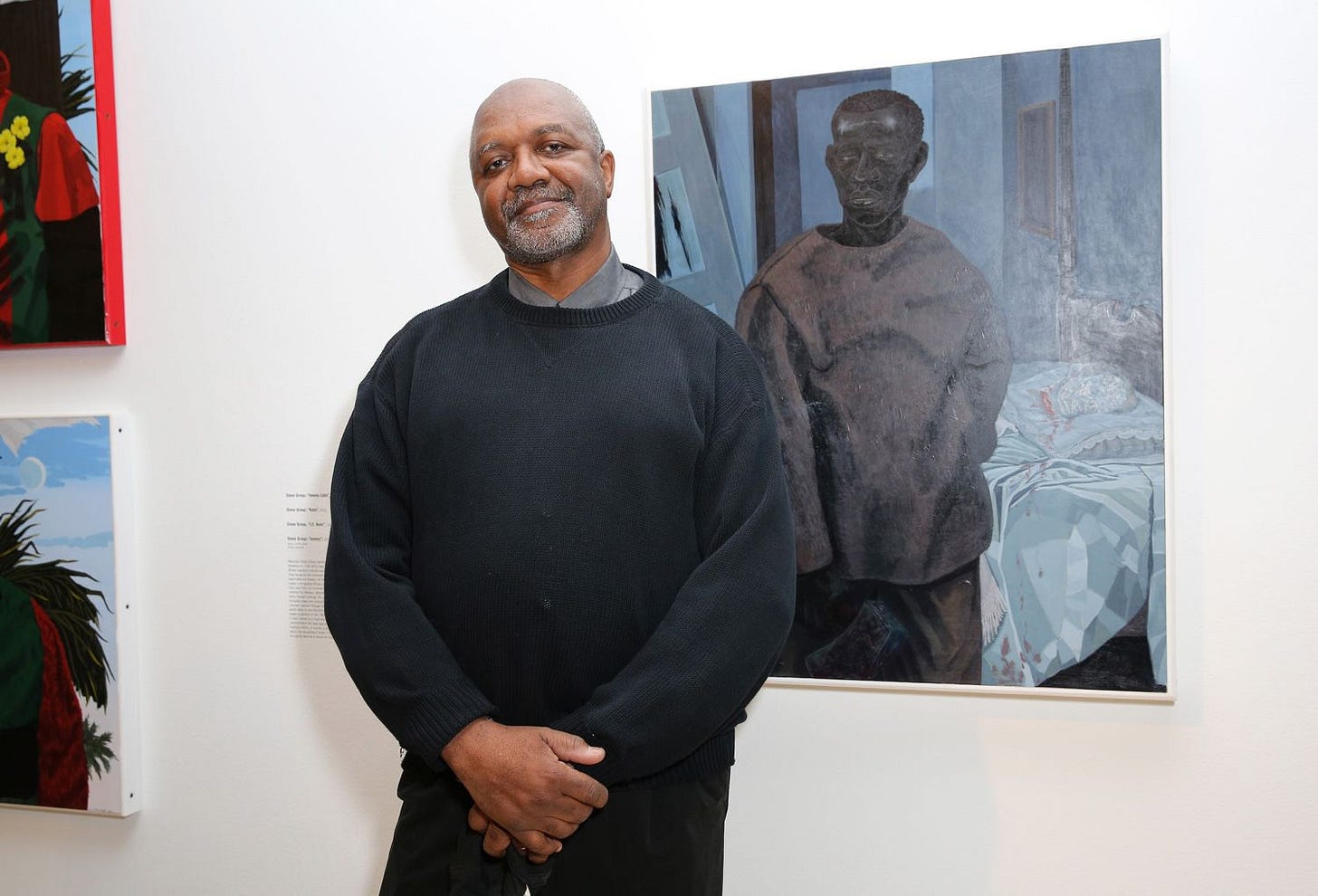
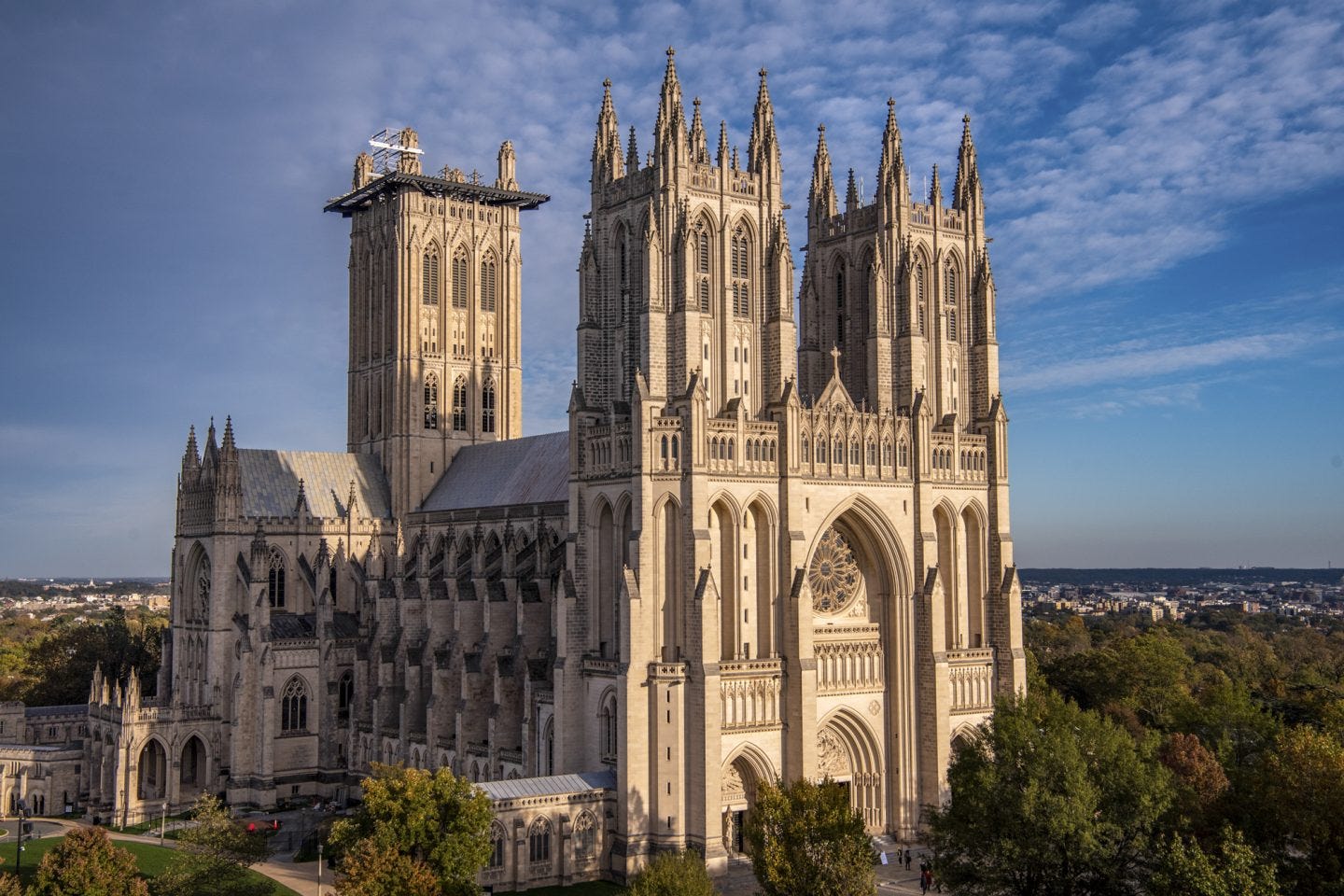
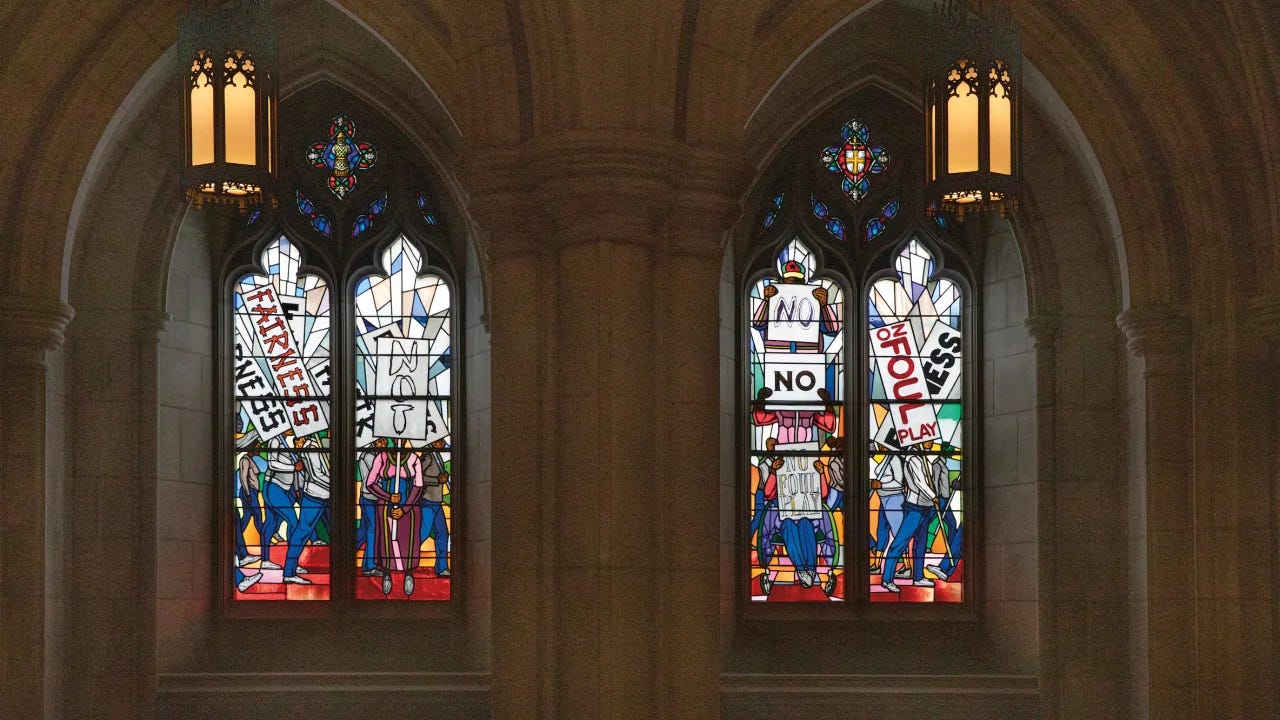
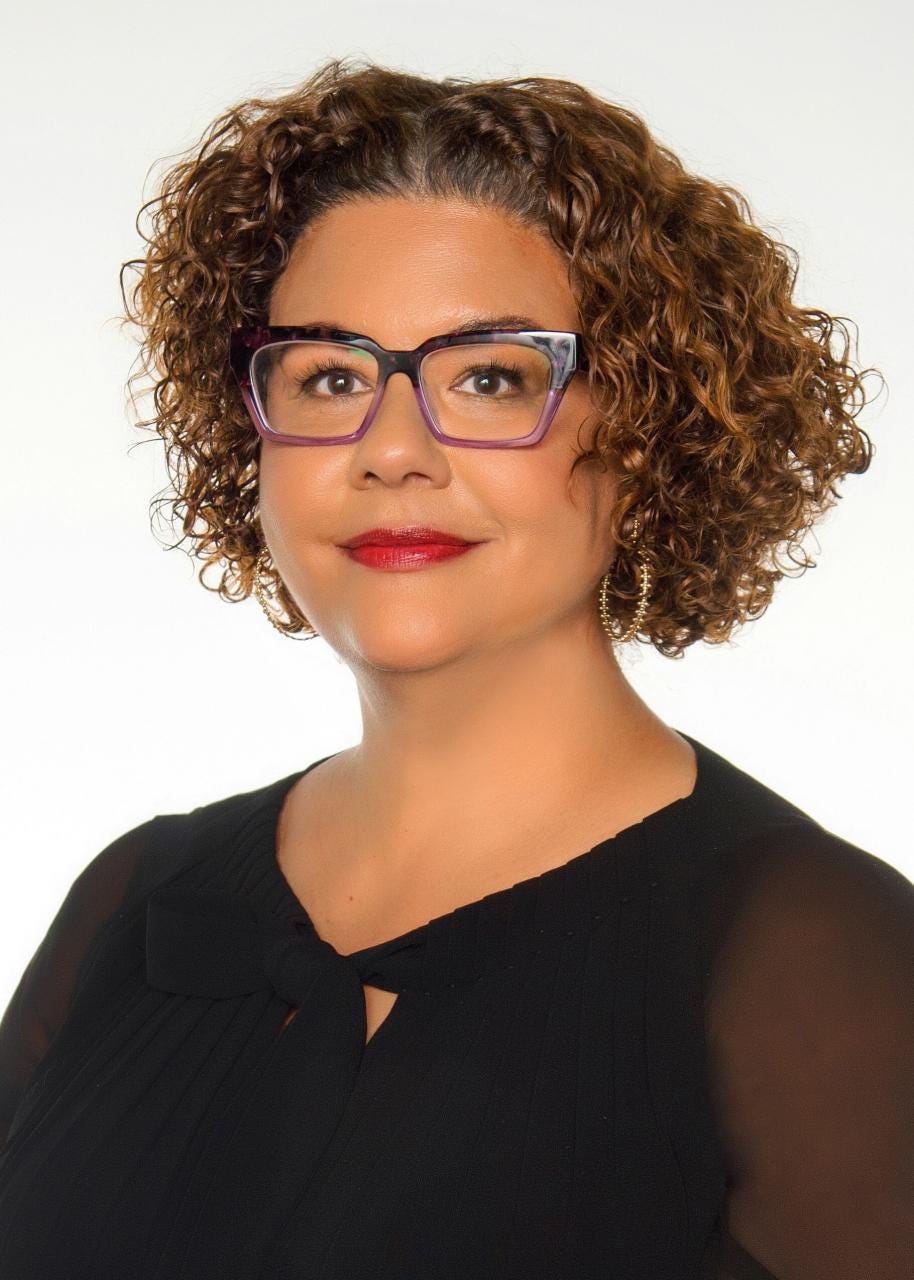
I also experienced Marshall's work. Russell and I came upon it by happenstance and thoroughly enjoyed our introduction to his work. Thanks Dolan for the rigor of your historical research. It provides such important context for a real understanding of this historical event.
Thank you for sharing.